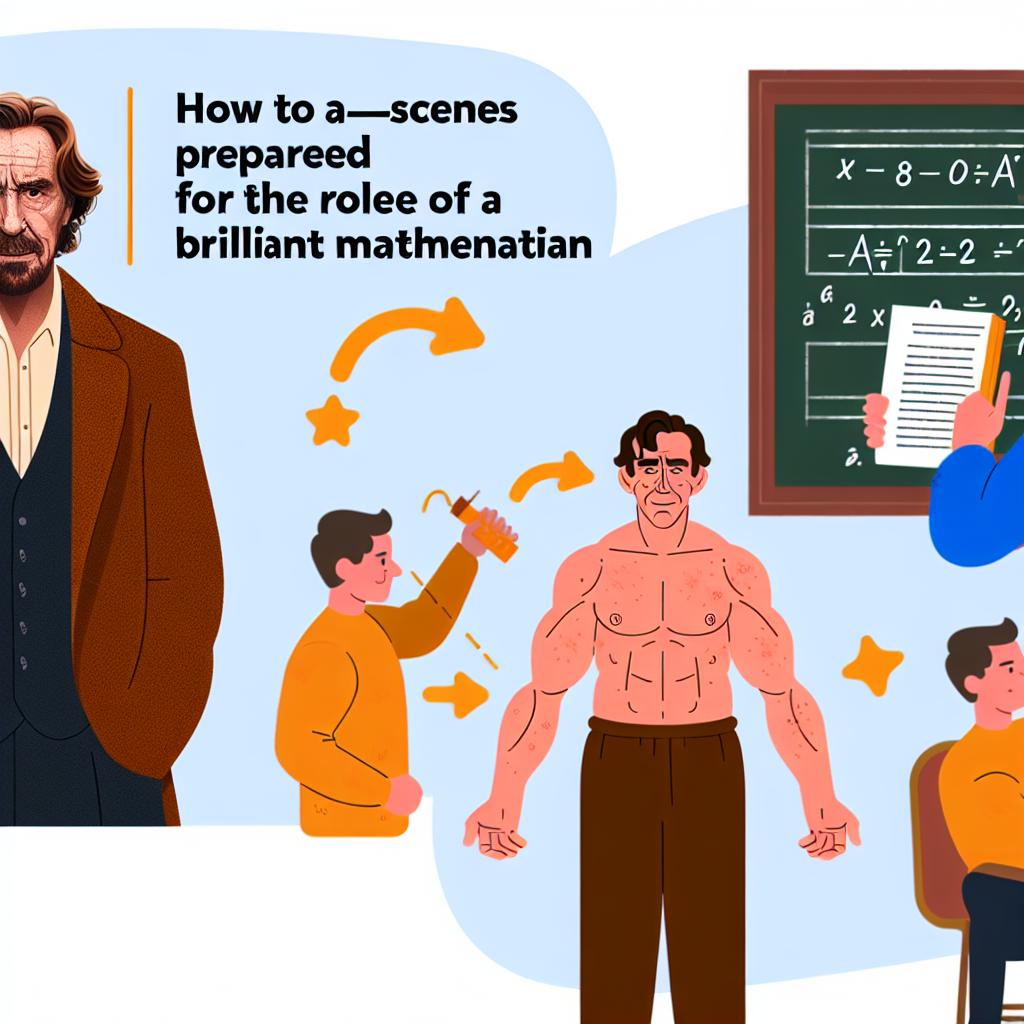Introduction to Russell Crowe’s Preparation for John Nash
Russell Crowe, an acclaimed actor known for his dedication to roles, approached the portrayal of John Nash in the film A Beautiful Mind with meticulous attention to detail. Directed by Ron Howard, the film depicts the life of Nash, a Nobel Laureate in Economics known for his pioneering work in game theory. Here, we explore the methods Crowe employed to embody the complex character of Nash.
Researching John Nash’s Life and Work
Crowe’s preparation began with extensive research into Nash’s life and achievements. This involved studying Nash’s biographical details, including his academic contributions and struggles with schizophrenia. Crowe also delved into Nash’s work on game theory, striving to understand the academic context and implications of Nash’s theories. This foundational research was essential for portraying the intellectual aspects of Nash’s character authentically.
Crowe’s research phase was vast and deep, beginning with an exploration of Nash’s background through available biographical sources. As a character, Nash was defined by both his extraordinary intellectual capabilities and his personal struggles. Crowe immersed himself in Nash’s early years, his tumultuous academic journey, and his substantial contributions to the fields of mathematics and economics. Understanding Nash’s theories, especially his influential work on game theory, was crucial for Crowe. Game theory, a significant element of Nash’s legacy, allowed Crowe to appreciate the intellectual environment in which Nash operated.
Engaging with Experts
To deepen his understanding, Crowe consulted with experts in fields related to Nash’s life. Engaging with mathematicians and mental health professionals enabled him to accurately depict both Nash’s intellectual brilliance and his mental health challenges. This collaboration provided insight into the nuances of Nash’s behavior and thinking patterns, helping Crowe to deliver a realistic performance.
The benefit of interacting with mathematicians allowed Crowe to grasp the complex nature of Nash’s work, ensuring his portrayal was informed by a foundational understanding of mathematics. Crowe was particularly focused on capturing not only Nash’s groundbreaking ideas but also the manner in which his mind operated. Furthermore, consulting with mental health professionals gave Crowe perspective on schizophrenia. This was essential to authentically depict the challenges faced by Nash, aiming to portray this aspect with sensitivity.
Meeting with John Nash
An important aspect of Crowe’s preparation was his direct interaction with John Nash himself. Meeting Nash allowed Crowe to observe his mannerisms, speech patterns, and personal expressions. Such firsthand experience was invaluable in creating an authentic portrayal, enabling Crowe to represent Nash with empathy and respect.
By meeting Nash, Crowe sought to absorb the nuances of Nash’s personality first-hand. Observing Nash’s subtleties was a vital component in Crowe’s preparation; the objective was to reflect Nash’s unique character traits as truthfully as possible. This meeting was not just an opportunity to replicate physical traits but also to grasp the spirit of a man who was both enigmatic and profoundly influential.
Adopting Physical and Emotional Traits
Crowe paid careful attention to embodying Nash’s physical and emotional traits. This included adopting subtle mannerisms and speech patterns observed during his research and interactions. Additionally, Crowe worked on conveying the emotional highs and lows associated with Nash’s life journey, particularly the challenges of living with schizophrenia. Through nuanced performance, Crowe aimed to capture the duality of Nash’s genius and vulnerability.
Understanding and reflecting Nash’s physical demeanor involved a series of subtle yet critically important choices in posture, gestures, and voice modulations. Crowe invested considerable efforts into mastering the intricacies of Nash’s communication style, enabling him to create a persona that felt true to life. The emotional dimension of Nash’s life required Crowe to navigate the profound impact of schizophrenia, an aspect that impacted not just Nash’s professional life but his personal relationships as well.
Challenges Faced During Preparation
The role of John Nash posed several challenges for Crowe, particularly in portraying the complex interplay between Nash’s intellectual prowess and his mental health struggles. Crowe had to balance the depiction of Nash’s brilliance with sensitivity to his schizophrenia. This required careful consideration of how to accurately represent hallucinations and their impact on Nash’s life and work.
While creating a balance between Nash’s intellectual achievements and his personal adversities, Crowe faced the task of authentically representing schizophrenia without resorting to clichés or dramatization. Achieving this delicate balance was vital to maintain the film’s integrity and its respectful approach toward mental health. Crowe’s portrayal needed to reflect Nash’s hallucinations as part of his reality but do so in a manner that communicated the complexity and subtlety of his experiences.
Conclusion
Russell Crowe’s preparation for the role of John Nash in A Beautiful Mind was rigorous and comprehensive. Through research, expert consultation, and personal engagement, Crowe was able to deliver a performance that was both accurate and deeply human. His dedication to the role contributed significantly to the film’s success and provided audiences with a compelling portrayal of one of the most intriguing figures in modern intellectual history. For further insights into Crowe’s filmography, you can explore additional resources online.
Crowe’s commitment to authenticity stands as a testament to his capabilities as an actor. His journey in portraying Nash was marked by an unwavering dedication to understanding and representing Nash’s life with honesty and respect. Through meticulous preparation, Crowe not only presented Nash’s intellectual contributions but also shed light on the personal and psychological challenges that defined his life, offering audiences a nuanced and multi-dimensional view of a genius whose life was as complex as his theories.
This article was last updated on: June 29, 2025

